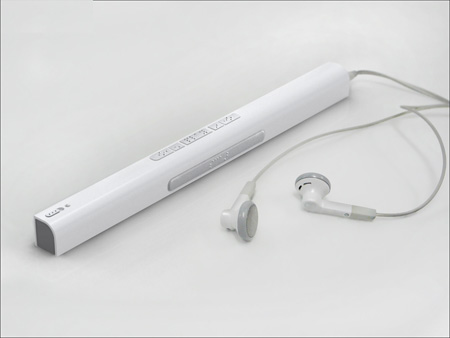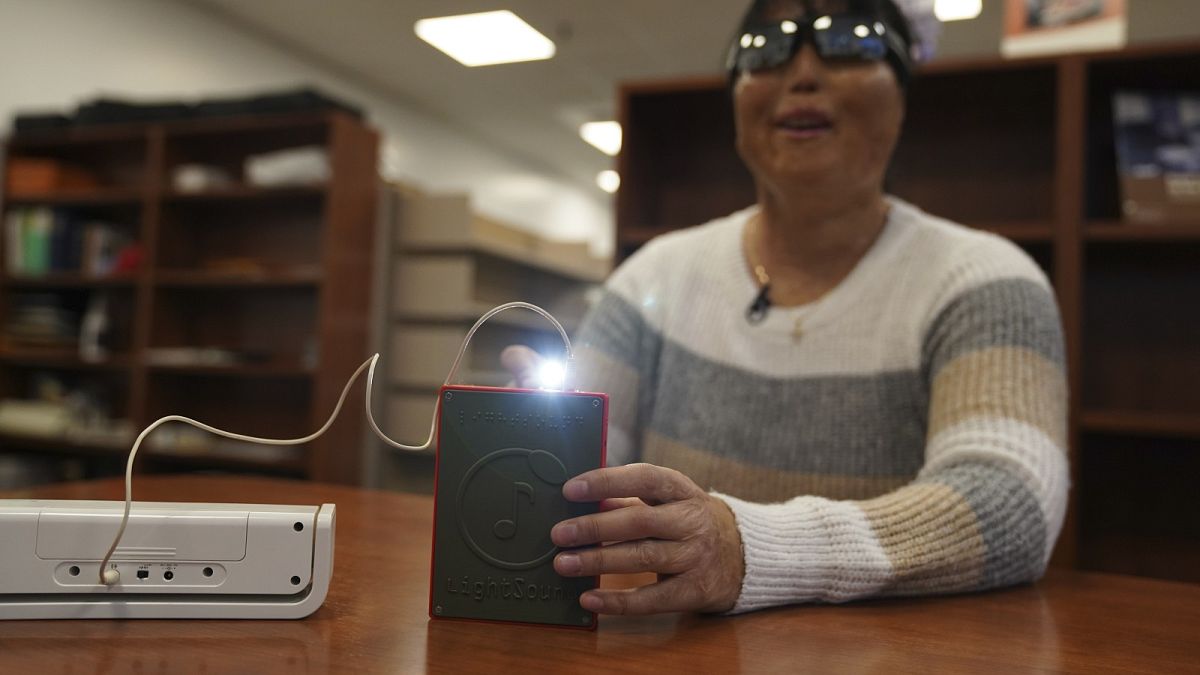Empowering Independence With Assistive Modern Technology for the Blind
The integration of assistive innovation right into the lives of people with aesthetic disabilities represents a substantial innovation in advertising freedom and self-sufficiency. From cutting-edge display visitors to sophisticated wise walking canes, these devices not only boost daily navigation and interaction yet likewise encourage users to engage meaningfully in various aspects of life. As we check out the myriad advantages and real-world applications of these innovations, it becomes critical to take a look at the underlying variables that contribute to their performance and the capacity for future advancements in this important field.
Review of Assistive Modern Technology

The growth of assistive modern technology is based in concepts of inclusivity and empowerment. Technologies in software, equipment, and sensory enhancements provide individuals with alternatives customized to their specific demands. From display visitors that transform message to speech, to tactile devices that convey information via touch, these devices transform the means individuals involve with their surroundings.
Along with sensible applications, assistive innovation fosters greater social addition and participation in various fields, consisting of education and learning and employment (Braille displays and notetakers). As r & d proceed to advance, the possibility for assistive modern technology to further boost the lives of aesthetically damaged people remains encouraging, paving the method for a much more fair culture where everyone can prosper
Types of Assistive Tools
A selection of assistive tools have arised to support individuals with visual problems, each developed to meet details requirements and improve daily performance. These devices range from low-tech solutions to sophisticated innovations, offering diverse choices for customers.
Low-tech devices consist of magnifiers and large-print products that help in analysis and writing. Braille devices, such as Braille styluses and slates, enable responsive reading and interaction. Orientation and wheelchair aids, like white canes, assist individuals browse their setting safely.
On the greater end of the range, electronic magnification systems and screen viewers supply considerable assistance. Electronic magnifiers allow customers to increase the size of message and photos on displays, while screen visitors convert digital content into manufactured speech, facilitating accessibility to information on mobile phones and computers.
Smart device applications additionally play a critical role, offering features like message acknowledgment and navigating assistance. Wearable technology, such as wise glasses geared up with increased reality, is becoming an encouraging tool to enhance situational recognition.
Advantages of Assistive Technology
The combination of assistive technology substantially boosts the quality of life for individuals with aesthetic problems. These innovations empower customers by promoting self-reliance, enabling them to navigate their environments better and carry out daily jobs with higher ease. Display readers and magnifying software permit individuals to access digital details, promoting academic and expert chances that may have formerly been out of reach.
Furthermore, assistive devices such as wise walking sticks and general practitioners applications supply real-time navigation help, enhancing movement and safety. This boosted autonomy not only improves self-esteem yet additionally urges social engagement, permitting customers to get involved more fully in their neighborhoods.
Assistive innovation likewise facilitates interaction, helping customers get in touch with others via voice recognition and text-to-speech applications. This capacity is essential for maintaining connections and accessing critical details.
In addition, the modification options offered with lots of assistive modern technologies make sure that customers can customize tools to their certain demands, better enhancing functionality and performance. Overall, the benefits of assistive modern technology for people with visual disabilities are extensive, advertising an extra inclusive culture where everyone can pursue their desires and goals.
Study and Success Stories
Highlighting site the transformative effect of assistive technology, numerous study illustrate exactly how people with aesthetic impairments have actually effectively integrated these devices right into their lives. One compelling instance involves a college pupil who utilized display reading software program to navigate scholastic products and on the internet sources successfully. This technology not only promoted her education but additionally enhanced her self-confidence in taking part in conversations and team projects.
An additional study features a specialist that uses a mobile phone application created for navigation and item acknowledgment. By utilizing this app, he has actually regained freedom in both his individual and work atmospheres, allowing him to commute separately and engage with associates better.
Furthermore, a retired person shared her experience with braille e-readers, which allowed her to access a huge array of literary works and stay connected with her community with publication clubs.
These success stories emphasize the vital role of look what i found assistive technology in fostering self-reliance, improving top quality of life, and advertising social assimilation for individuals with aesthetic problems (Assistive technology for the blind). By accepting these ingenious tools, users can get rid of obstacles and take possibilities that add to their professional and individual gratification

Future Trends in Assistive Modern Technology
Development in assistive innovation is positioned to redefine the landscape of support for people with aesthetic impairments. Arising trends stress the integration of synthetic intelligence (AI) and artificial intelligence, which boost the capability of tools that assist with navigating and details availability. AI-driven applications are currently qualified of analyzing aesthetic information in real-time, allowing customers to engage with their environment more individually.
Moreover, the advancement of wearable innovation is progressing rapidly. Smart glasses equipped with increased truth (AR) can give audio summaries of environments, changing how individuals connect with public spaces. These gadgets not just advertise freedom yet also foster social addition.
Additionally, the Web of Things (IoT) is making homes smarter, enabling for seamless connectivity in between everyday appliances and assistive gadgets. This connectivity empowers users by enabling voice-activated controls and automatic reactions customized to specific demands.
Conclusion
In verdict, assistive technology plays a pivotal function in equipping individuals with visual impairments by enhancing their independence and interaction with their surroundings. The varied range of applications visit site and tools readily available not only promotes navigating and interaction however also promotes social combination and possibilities for specialist and personal growth. As improvements continue in this area, the capacity for improving the lifestyle for those with visual disabilities will certainly broaden, promoting greater freedom and empowerment.
